Suchergebnisse
Solar Heating And Cooling in Austria (Faninger, 2009)

Status Report 2009 on Research, Development and Market Deployment of Solar Thermal Technologies in Austria. Presented to the IEA Solar Heating and Cooling Programme in July 2009
Model region Güssing
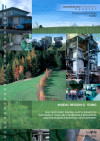
Self-sufficient energy supply based on regionally available renewable resourcesand sustainable regional development
Forschungsforum
1/2007
Herausgeber: BMVIT
Englisch, 6 Seiten
Downloads zur Publikation
Joint Call for RDI projects on Integrated Regional Energy Systems
ERA-Net Smart Energy Systems (SES) will launch its first joint call for RDI projects on Integrated Regional Energy Systems with a budget of approximately 30 Mio Euro.
IEA EGRD Workshop - Future Energy Market Designs: Research and Innovation Needs
22. - 23. October 2018
Project Management Jülich, Zimmerstraße 26-27, 10969 Berlin, DE
An event organised under the auspices of the Experts’ Group on R&D Priority Setting and Evaluation (EGRD).
IEA-SHC Task 65: Solar Cooling for the Sunbelt Regions
Without measures, cooling demand will triple by 2050. The aim of Task 65 is to adapt existing technologies to the boundary conditions of the sunbelt, to find suitable system concepts, to evaluate them and to disseminate the advantages. In addition to system adaptations, the Austrian focus is on life cycle cost-benefit analysis and the further development of existing assessment tools.
IEA EBC Annex 91: Open BIM for Energy Efficient Buildings
Building Information Modeling (BIM) is considered a key technology for optimising the overall energy performance of buildings. The project lays the foundations for OpenBIM tools to include the assessment and optimisation of the energy efficiency of buildings in the future, for Open BIM processes and data models to be increasingly harmonised and standardised, and thus for smaller construction companies to have the opportunity to work on complex BIM projects in the future.
IEA EBC Annex 89: Ways to Implement Net-zero Whole Life Carbon Buildings
IEA EBC Annex 89 focuses on the pathways and actions needed by various stakeholders and decision-makers to implement whole life cycle based net-zero greenhouse gas (GHG) emissions from buildings in policy and practice. Annex 89 will support key stakeholders and decision-makers in developing and implementing effective Paris-goal compatible schemes and solutions to achieve NetZ-WLC buildings at multiple scales.
IEA HPT Annex 63: Impact of heat pump placement on noise emissions
Noise emissions from heat pumps are a potential barrier for broad market diffusion of this energy efficiency technology, especially in urban areas. In this project, the influences of noise emissions in the building and in the neighbourhood are characterised, their psychoacoustic effects are analysed in more detail, and tools for digitally supporting heat pump placement are further developed. The results will be presented to relevant target groups in the form of guidelines and other documentation.
Secondary Materials in the Austrian Textile Industry - Study with Recommendations for the Austrian R&D-Politics
This study deals with the challenges and potentials for the use of secondary materials in the Austrian textile industry. It identifies challenges and potentials for establishing cycles in the textile industry with a focus on the use of secondary materials in Austria based on broad stakeholder involvement. Based on this, recommendations for research and development activities were formulated to promote recycling.
IEA HPT Annex 64: Safety measures for flammable refrigerants
New bans on chemicals and the revision of the so-called F-Gas Regulation pose new challenges for the heat pump and refrigeration industry. In this project, new knowledge regarding the safe future use of flammable refrigerants in heat pump and refrigeration systems up to 50 kW for room temperature control and hot water preparation is being developed and made available to the relevant target groups.
Webinar: #EU Circular Talks: The circular economy in the context of a limited supply of biomass. - Ways forward to address biodiversity loss and climate change
13. June 2023, 10:00 - 11:30 CEST
Online
The EU Circular Talks is an exchange concept of the European Circular Economy Stakeholder Platform. It aims to encourage stakeholders to interact and discuss the circular economy topics in the platform.
Sustainable and Competitive: The Bioeconomic Future of the EU
20. September 2023
Brussels (Belgium)
This workshop will discuss Fraunhofer's Roadmap for the Future Development of the Circular Bioeconomy. It will explore the scientific and technological potential and challenges of the bioeconomy up to 2035.
IEA PVPS Task 15: Acceleration of BIPV
Building integrated Photovoltaics (BIPV) is one of the future markets for Photovoltaics which enables the combination of architecture and energy technology. The project focussed on further national research in the area of BIPV, which is to be raised to an international level.
IEA Wind Task 19: Wind Energy in Cold Climates (working period 2016 - 2018)
IEA Wind Task 19 deals with the challenges of the utilisation of wind energy in Cold Climates (i.e. under icing-conditions) and offers through global networking and mutual exchange of experience, the possibility of collecting and generating additional know-how. Aim of the subtask was to share experiences with international partners and standardising of icefall risk assessments. In addition, an evaluation report on the functionality of the new Vestas rotor blade heating system was published.
AMFI Newsletter 2/2014
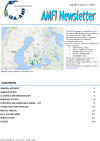
Herausgeber: International Energy Agency - Advanced Motor Fuels
Englisch, 20 Seiten
Downloads zur Publikation
AMFI Newsletter 4/2014
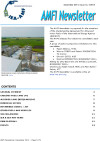
Herausgeber: International Energy Agency - Advanced Motor Fuels
Englisch, 15 Seiten
Downloads zur Publikation
Ecodesign

Initiatives and measures for the promotion of an environmentally sound product design
Forschungsforum
2/1995
Herausgeber: BMVIT
Englisch, 6 Seiten
AMFI Newsletter 4/2013
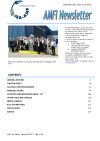
IEA-Advanced Motor Fuels
4/2013
Herausgeber: International Energy Agency - Advanced Motor Fuels
Englisch, 17 Seiten
Downloads zur Publikation
Tomorrow's heating networks
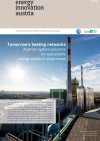
Austrian system solutions for sustainable energy supply in urban areas
energy innovation austria
1/2015
Herausgeber: BMVIT & Klima- und Energiefonds
Englisch, 8 Seiten
Downloads zur Publikation
Einfach:wohnen, Phase Construction

Support for the erection of the demonstrative housing project consisting of 7 houses (5 Low energy houses, 1 passive house and 1 "next to passive house")
